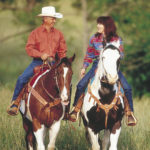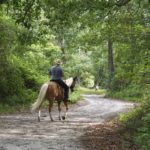Snakebite – What’s Happening:

A poisonous snake injects venom through his fangs into your horse’s tissues. The venom is picked up by your horse’s lymphatic system (the system responsible for dealing with foreign invaders), and distributed throughout his body, ultimately causing generalized illness; at the bite site, it immediately causes death of surrounding tissue.
Snakebite – What to do:
- Step 1: Stop your horse and keep him quiet. Movement will sped up the distribution of venom throughout his body.
- Step 2: Remove your snakebite kit from your first-aid kit.
- Step 3: Use Betadyne solution to thoroughly clean the area surrounding the puncture wounds you’ve identified.
- Step 4: With your thumb and forefinger, squeeze together one of the suction cups from your kit; place it over the bite marks and release your fingers’ hold. Doing so will apply the suction necessary to draw venom out of the wound. Repeat several times, over each mark. Do not attempt to apply a tourniquet.
- Step 5: If at all possible, bring your trailer to your horse. Otherwise, slowly lead your horse home, or to your trailer, stopping every 15 minutes to allow him to rest. (Don’t walk him any farther than absolutely necessary.) Summon your vet as soon as you get home, or haul your horse to an equine clinic.
- Step 6: If your horse’s nose begins to swell, gently insert a 6-inch piece of garden hose from your first-aid kit into each nostril, to keep his airways open.
Snakebite – Risk Factors:
- Riding in an area known to have poisonous snake populations.
- Poorly maintained trails with logs, large rocks, or other such snake hideaways.
- Water crossings/ standing water on trails in areas where poisonous water snakes reside.
- Riding near paved roads at night; when the sun sets and temperatures cool down, snakes are attracted to the warmth held in by pavement.
Snakebite – Preventative Measures:
Avoid poorly maintained trails; learn the favorite haunts of your local snake population; stay on the trail, and carefully watch where you’re going; in high-risk areas, outfit your horse with protective boots; when you stop for a break, make a lot of noise to chase any snakes away.
Click here for more articles on Trail Riding First Aid.
Barb Crabbe, DVM, is a contributing editor at Horse & Rider. She is an Oregon-based equine practitioner.





